
Become a member
Join today and help protect nature, beauty and history – for everyone, for ever. Enjoy access to more than 500 places with National Trust membership.
Take in the scale and magnificence of this 600-year-old estate with its courtyards, showrooms, Gatehouse Tower and acres of parkland.
Sevenoaks, Kent, TN15 0RP (Sat Nav TN13 1HX)
Book a visit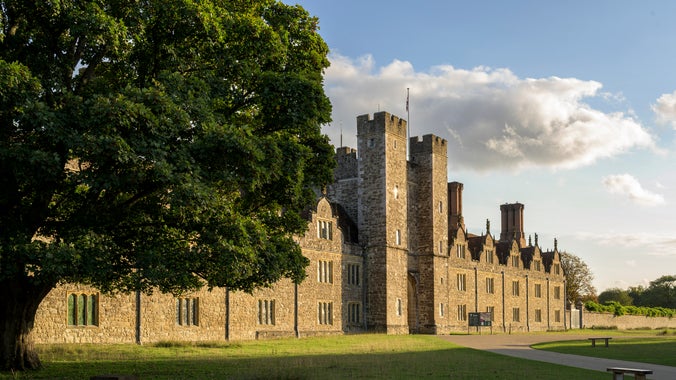
| Asset | Opening time |
|---|---|
| Showrooms | Closed |
| Gatehouse tower | Closed |
| Brewhouse Café | Closed |
| Car park | Closed |
| Park | Dawn - Dusk |
| Bookshop | Closed |
| Toilets | Closed |
| Shop | Closed |
Last entry to the showrooms and Gatehouse Tower is 3.30pm. Last orders in Brewhouse Café should be made 30 minutes before closing time.
Knole is closed on Wednesday 24 and Thursday 25 December 2025. This includes the car park, toilets, café and all facilities. The pedestrian gates to the park remain open.
The Royal Oak Foundation Conservation Studio is open to visitors on Wednesdays, Thursdays, Fridays and Saturdays, 11am-4pm. It will be closed on 26 December 2025 and 1 January 2026.
Please note that from Monday 3 November 2025, half of the showrooms will be closed. The following rooms remain open to visitors: Great Hall, Painted Stairs, Ballroom, Reynolds Room, Cartoon Gallery and King's Room. The showrooms ticket price has been reduced to reflect this.
| Ticket type | With Gift Aid | Without Gift Aid |
|---|---|---|
| Adult (18+) | £6.00 | |
| Child (5-17) under 5s free | £3.00 | |
| Family (2 Adults and up to 3 children) | £15.00 | |
| Group (Adult 18+) | £5.70 | |
| Group (Child 5-17) | £2.85 | |
| 1 adult and up to 3 children | £9.00 |
| Ticket type | With Gift Aid | Without Gift Aid |
|---|---|---|
| Adult (18+) | £11.00 | |
| Child (5-17) under 5s free | £5.50 | |
| Family (2 Adults and up to 3 children) | £27.50 | |
| Group (Adult 18+) | £10.45 | |
| Group (Child 5-17) | £5.25 | |
| 1 adult and up to 3 children | £16.50 |
An audio guide containing information about conservation work at Knole is available from the Visitor Centre.
The bookshop is situated in Green Court and sells new books, stationery, greetings cards and postcards. There is also a children's corner with books, toys and games.
Bookshop - more informationOpen 10am-4pm. Last orders 30 minutes before closing. There will be reduced indoor seating in the Brewhouse café on the following dates, due to maintenance work: Mon 5 to Thu 8 Jan, Mon 12 to Thu 15 Jan 2026.
Café - more informationDogs are allowed in the courtyards but not in any indoor spaces, including the café, showrooms and shops. There is covered outdoor seating at the café where dogs are permitted. <p> Assistance dogs are welcome throughout the property. <p> In the park, dogs must be on a lead at all times to protect the wild deer herd.
Dogs allowed - more informationThere are two toilet locations: one in Green Court near the showrooms and shops, and another on the ground floor of the conservation studio building opposite the Brewhouse Café. Baby changing facilities are available in both toilet locations. There are two large accessible toilets on site and no adult changing facilities.
Showrooms partially accessible (wheelchairs users can only access Great Hall). Gatehouse Tower not accessible to wheelchairs due to steep, narrow, spiral staircase. Baby changing facilities are available in the two toilet locations (Green Court and conservation studio building); there are no adult changing facilities.
The Great Hall is the only area of the house that is accessible to wheelchair users. There are hard-standing paths in the parkland but many cross a golf course so please discuss suitable routes with staff in the Visitor Centre. An enclosed picnic area is located in the park next to the car park, with decked flooring and a ramp suitable for wheelchair use.
There are two large accessible toilets on site, one located off the main entrance to the house and another located on the ground floor of the conservation studio building opposite the Brewhouse Café. Both accessible toilets are left hand transfer. All toilets have tiled floors and are lit with artificial light. Two baby changing facilities available.
A braille guide for the showrooms is available.
Parking is available for Blue Badge holders. Please have your Blue Badge on clear display so we can direct you to an accessible space. The car park is situated between the Brewhouse Café and the main building, approximately 145 metres from each on a gradient of 1:32. There are 19 designated spaces for Blue Badge holders.
Drop off zone located outside the front of the main building.
Induction loops are located at till points in the Visitor Centre, shop, bookshop and Brewhouse Café. There is also an induction loop in The Royal Oak Foundation Conservation Studio. A portable induction loop is available for use in the showrooms if required; please ask a member of staff in the Visitor Centre for assistance.
All interpretation panels in the house are in large print.
The Brewhouse Café is accessible by a pathway on a gradient of 1:14 from the accessible car park.
There is level access to all ground floor spaces, except for the gift shop and Orangery, where lifts are available.
There is access across level paving throughout the courtyard areas. The route to the showrooms is across 73 metres of level paving through two courtyards. There is one step, with an accessible ramp, into the Great Hall entrance. The Great Hall is the only area of the house that is accessible to wheelchair users.
A lift is available for access to The Royal Oak Foundation Conservation Studio and Hayloft Learning Centre. A lift is available in the gift shop and the bookshop for wheelchair access to and from the Orangery. There is no lift in the showrooms - the Great Hall is the only area of the house accessible to wheelchair users.
The powered mobility vehicle can be booked for use at Knole, subject to availability. Please call 01732 462100, Monday to Friday, at least 24 hours in advance to book.
The Brewhouse Café, conservation studio building and toilet facilities are accessible by a pathway on a gradient of 1:14 from the car park.
Most of the showrooms have a seat available but there are no seats with arm rests. There are wooden benches situated around the outside courtyards and in the Orangery.
The Great Hall is the only area of the house that is accessible to wheelchair users. All other showrooms are upstairs. A rollator is available for use in the upstairs showrooms, which are accessed via the Great Staircase. This has handrails on the left-hand side and wide access. An iPad is available in the Great Hall to view the rooms upstairs.
Wheelchairs are available for visitors to use, subject to availability.
Pre-booking is essential at weekends and during school holidays. Find out how to pre-book your visit to Knole as well as how to purchase tickets for tours of Knole’s attic spaces and access to Lord Sackville’s private garden. Book online or call 0344 249 1895.
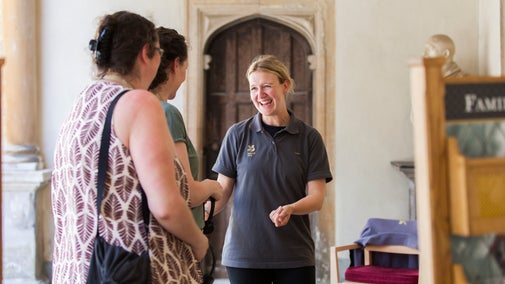
Get in the Christmas spirit at Knole with decorated courtyards, a giant wreath and the Great Hall adorned with rich, traditional Christmas colours.
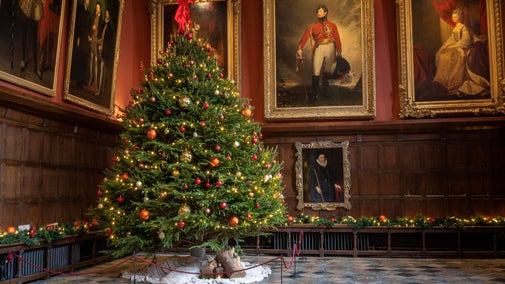
From toddler groups and attic tours to craft workshops and lectures, find details of upcoming events at Knole here.

Conserving and preserving history for the future. Open to visitors Wednesday to Saturday.

Knole is a two pawprint rated place, with acres of parkland to enjoy with your dog. Here's what you need to know before you set off.

All aerial activity above our sites is prohibited unless specific permission is granted, according to an existing byelaw.

Download this map for more information on the courtyards, parking areas and facilities at Knole.
Take a look at the map of Knole estate and walks in the parkland.
Pre-booked groups get great benefits including reduced price admission, refreshments for the coach driver, free admission for the group leader and free parking for your coach.

Plan an educational visit to Knole for an award-winning programme that supports learning across the history, science, art, music and geography curriculum. We offer educational visits throughout the academic year, and also offer a loan box and outreach programme.

Archbishop's palace, royal residence, and Sackville family home. Showcasing textiles, paintings and a world class collection of Royal Stuart furniture.
Spiral stairs leading to the private apartments of former resident, Eddy Sackville-West. Panoramic views from the tower rooftop.
Conservation Studio housed in the magnificent medieval barn. View the collections store and working studio for conservation in action. Open to visitors Wednesday to Saturday.
Kent's last medieval deer park with meandering walks and bustling wildlife. Managed alongside the Sackville family's Knole Estate.
Postman Bunny has lost Beatrix Potter's Christmas cards - can you help him find them?

Get in the Christmas spirit at Knole with decorated courtyards, a giant wreath and the Great Hall adorned with rich, traditional Christmas colours.

Join a behind the scenes tour to explore these spaces and see a different side to Knole. Please note: the last tour for 2025 is on Sat 20 Dec; tours resume on Wed 7 Jan 2026.

Get in the Christmas spirit at Knole with decorated courtyards, a giant wreath and the Great Hall adorned with rich, traditional Christmas colours.

There are plenty of things for families to enjoy on a visit to Knole.

The parkland at Knole is a designated Site of Special Scientific Interest (SSSI), covering 1,000 acres of trees, undulating valleys, open parkland and is home to a herd of wild deer.

Knole was built to impress. Come and explore the grandeur of its showrooms, the hidden secrets of the attics and the rooms Eddy Sackville-West called home in the Gatehouse Tower.

Browse the latest seasonal ranges and pick up something to brighten up your home and bookshelves at Knole. Pop into the Brewhouse Café for drinks, savoury snacks and sweet treats.

The parkland at Knole is a designated Site of Special Scientific Interest (SSSI), covering 1,000 acres of trees, undulating valleys, open parkland and is home to a herd of wild deer.

Knole is a two pawprint rated place, with acres of parkland to enjoy with your dog. Here's what you need to know before you set off.

Knole’s parkland is home to a herd of fallow deer and it’s important to us that everyone has the best experience possible, so here are some dos and don’ts.

Take a look at the map of Knole estate and walks in the parkland.
Postman Bunny has lost Beatrix Potter's Christmas cards - can you help him find them?
Hidden above the showrooms lie Knole's attics. Join a behind the scenes tour to explore these spaces and see a different side to Knole.
Are you interested in volunteering at Knole? Join us at a volunteer coffee morning to find out more.
Join fellow book enthusiasts and discuss this year's theme of 'from page to screen' with a selection of titles that have been adapted for the big and small screen.
Visitors can explore the 26 acre garden and stunning views of the house on these special event days throughout the year.
In 2026, Knole is collaborating with artist Chinwe Russell to celebrate stories of incredible women from around the world.
Please pre-book to visit Knole.
_______________
Sitting proudly within Kent’s last medieval deer park, Knole offers something for everyone. Immerse yourself in the vast estate and follow in the footsteps of tourists who have visited Knole’s showrooms for 400 years. Originally built as an archbishop’s palace, Knole passed through royalty to the Sackville family, who still live here today. Take in the scale and magnificence of this 600 year old estate by exploring the grand courtyards and tranquil Orangery or wander the winding paths in the parkland, still populated by wild deer.
Inside the showrooms art lovers will find Reynolds, Gainsborough and Van Dyck to admire. Textiles enthusiasts can marvel at the seventeenth century tapestries and furniture that make the collection internationally significant. You can explore the life and loves of former resident Eddy Sackville-West in the Gatehouse Tower and climb the spiral staircase to take in panoramic views from the rooftop.
Visitors can find out how our team of conservators care for National Trust treasures in the Royal Oak Foundation Conservation Studio and see them in action from Wednesday to Saturday.
Find out more about volunteering at Knole, Kent, from meeting and helping visitors, to opportunities for study and regular social events and outings. We're currently looking for room guides for the showrooms and Gatehouse Tower.
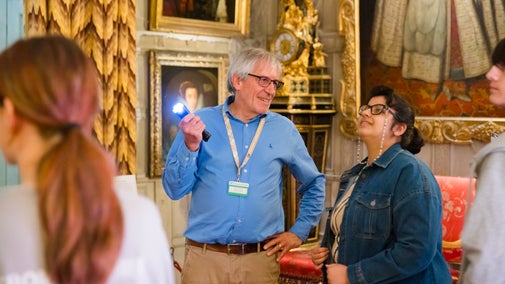
Browse the latest seasonal ranges and pick up something to brighten up your home and bookshelves at Knole. Pop into the Brewhouse Café for drinks, savoury snacks and sweet treats.

Knole is full of treasures and was designed to impress its visitors. Originally an archbishop’s palace, then Royal residence, now home to the Sackville family for over 400 years.
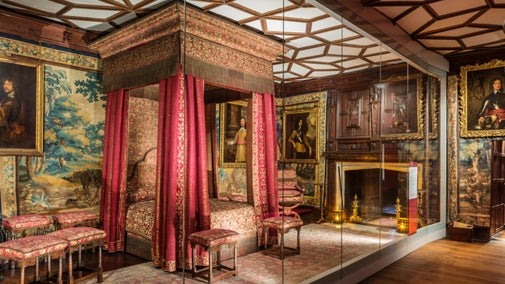
Discover more about former resident Eddy Sackville-West, who made his home in the Gatehouse Tower at Knole.

Virginia Woolf's 'Orlando' was inspired by Vita Sackville-West and Knole. A project to digitise the original manuscript means it is now accessible online.
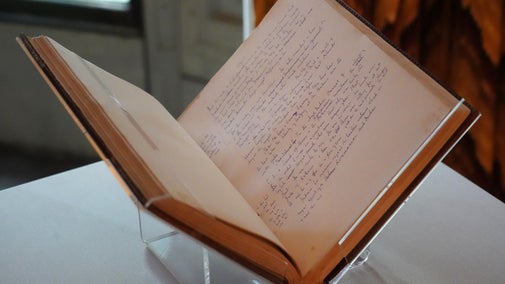
Knole has been home to and shaped by people who challenged conventional ideas of gender and sexuality. Discover their stories and the challenges they faced.

Discover Vita Sackville-West's connection to Knole; her colourful life and her literary legacy as a poet, novelist, gardener, biographer and journalist.

Women weave a fascinating and rich thread throughout Knole's history. Often wealthy and powerful in their own right, they left their mark on Knole, a legacy that remains today.

Hidden above the grandeur of the showrooms lie Knole's attics - sometimes inhabited but more often used for storage, these spaces have evolved over the centuries with each generation. Find out more about the history of the spaces as well as witchmarks and unusual items that have been discovered.

A series of witchmarks, believed to ward off evil spirits, were discovered in a room built to accommodate James I at Knole following the Gunpowder Plot in 1605.

Explore Knole's showrooms to see one of the rarest and most well-preserved collections of Royal Stuart furniture, paintings, objects and textiles – on show since 1605.

Virginia Woolf's 'Orlando' was inspired by Vita Sackville-West and Knole. A project to digitise the original manuscript means it is now accessible online.

The Knole collection includes more than 300 paintings by 17th and 18th-century masters, many commissioned and collected by Sir John Frederick Sackville, the 3rd Duke of Dorset.

Knole is home to some of the last surviving 17th-century furniture from Whitehall and Hampton Court Palaces, among the most expensive status objects of their time.

In early 2024 we commissioned Wood Carving London to make reproductions of 16th and 17th century furniture. Find out how the project came together.
Your gift will help to conserve and protect the house at Knole for future generations to enjoy.
In early 2024 we commissioned Wood Carving London to make reproductions of 16th and 17th century furniture. Find out how the project came together.
Discover more about how the historic buildings and collection have now been conserved for future generations to enjoy and discover how the work was funded.

Join today and help protect nature, beauty and history – for everyone, for ever. Enjoy access to more than 500 places with National Trust membership.
By sharing your email address you’re agreeing to receive marketing emails from the National Trust and confirm you’re 18 years old or over. Please see our for more information on how we look after your personal data.